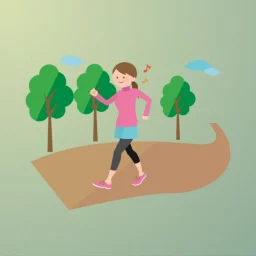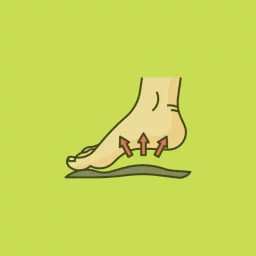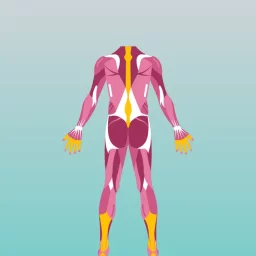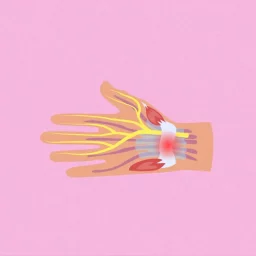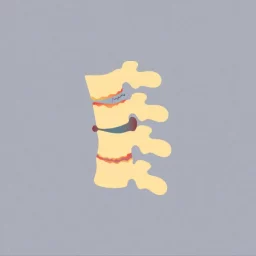Time to Stretch
As we go through life, we develop habitual ways of using our muscles to move and position ourselves. Poor posture and reduced range of motion may be the result of limited stretching, sedentary behaviours, improper body alignment, or the result of a global pandemic! With age, our muscles naturally tighten which can lead to poor posture and back pain. As we slowly return to pre-pandemic living, access to regular physical activity is getting easier, but our bodies may not feel as limber as they used to. Now is a perfect time to incorporate stretching and exercise into your daily routine to ensure good spine and joint health. Time to stretch!
Your Guide to Stretching Safely
Stretching can increase flexibility and improve the range of motion in your joints and spine. Making sure you have adequate flexibility and symmetry in your body can decrease your risk of injury. Regular stretching keeps muscles long, lean, and flexible so your body can safely handle the physical stress in your day-to-day.
Stretching is much like the practice of yoga; doing it once won’t magically give you perfect flexibility. You will need to remain committed to the process to appreciate your body’s gains. Hopefully, you will learn to enjoy the ritual of stretching as part of your regular physical activity routine over time.
Benefits of Stretching
Research has shown that stretching can help improve flexibility, which can influence the range of motion of your joints. Increased flexibility may:
- Improve performance in physical activities
- Decrease the risk of injuries
- Help joints move through their full range of motion
- Increase muscle blood flow
- Enable muscles to work most effectively
- Improve the ability to do daily activities
Stretching Essentials
Before you dive into a new stretching routine, make sure you keep these tips in mind for safe and effective stretching. While you can stretch anytime and anywhere, proper technique is key. Stretching incorrectly can potentially do more harm than good.
1) Stretching is not warm-up.
Before stretching, consider a dynamic warm-up. A dynamic warmup involves performing movements similar to those in your specific sport or physical activity at a low level. Consider 5 to 10 minutes of light activity, like some light walking, jogging or biking at low intensity. Better yet, stretch after a workout when your muscles and joints are warmed up. You may hurt yourself if you stretch cold muscles.
2) Aim for balance and symmetry.
Each person’s affinity for flexibility is different. Rather than aiming for the flexibility of a gymnast, focus on having equal flexibility from side to side (especially if you have a history of a previous injury). Uneven flexibility could be a risk factor for injury, but more importantly, could be the sign of an underlying alignment or mechanical issue.
3) Focus on major muscle groups.
Be sure to stretch major muscle groups you use for everyday functional movements: like your calves, thighs, hips, lower back, neck and shoulders. Be sure to also include muscles you routinely use in your exercise routine.
4) Don’t bounce.
Stretch with smooth movement, without bouncing. Bouncing as you stretch can cause injury to your muscles and joints which can make things even tighter.
5) Hold your stretch.
Focusing on steady, deep breathing while stretching can help the process. Breathe normally and hold each stretch for about 30-45 seconds.
6) Don’t aim for pain.
You’ll feel tension during a stretch, but you should not feel pain. If it hurts, you’ve pushed too far. Back off to the point where you don’t feel any pain, then hold the stretch here.
7) Make stretches sport-specific.
Some evidence suggests that it’s helpful to do stretches involving the muscles used most in your sport or activity. If you are a golfer, be sure to stretch your hip flexors. If you play soccer, be sure to include stretches for your hamstrings.
8) Keep up with your stretching.
Stretching can be time-consuming, but you can achieve the most benefits by finding a stretching routine that works for you. Regular stretching, at least two to three times a week at even 5 to 10 minutes can improve flexibility.
Stretching routine ahead
The past years have been challenging with most of us facing a prolonged sedentary lifestyle and increased stress. Chances are, you have spent more time in front of the screen than you could have imagined. As a result of modern sedentary lifestyles, your posture has probably suffered. The health and flexibility of your musculoskeletal (MSK) system are integral to how you function.
The good news is that exercise and stretching can improve posture and muscular health. Incorporate stretching into your day-to-day routine. Think about 5-10 minutes of stretching after walking the dog or 5-10 minutes after your walking lunch.
Uneven flexibility could be a risk factor for injury, but more importantly, could be the sign of an underlying alignment or mechanical issue. If you or someone you know is suffering from poor posture and encountering aches and pains trying to start a new stretching routine, book an appointment with one of our chiropractors for help.
For more information or to book an appointment with one of our chiropractors, physiotherapists or massage therapists, visit our clinic websites at Curavita Byward and Curavita Glebe.
Time to Stretch by Curavita
Byward Market
Email: info.byward@curavita.com
Glebe
Email: info.glebe@curavita.com


